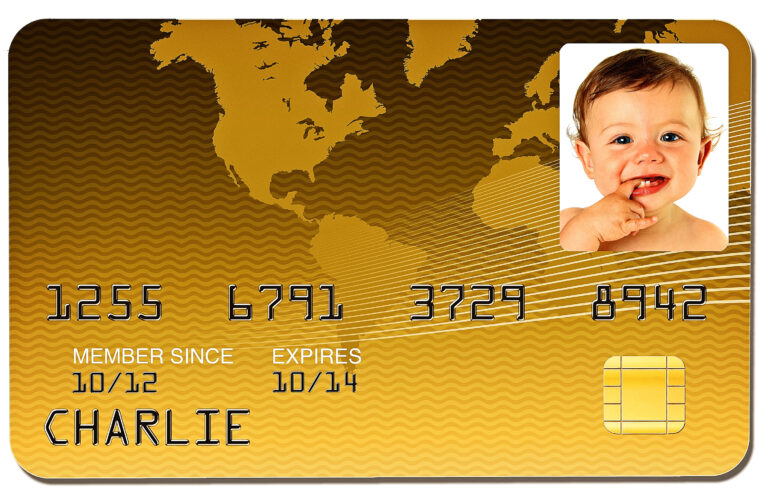Child identity theft is when someone uses a child’s personal information, such as their Social Security number, to commit fraud or other crimes. This can have a devastating financial and emotional impact on the child and their family.
10 Types Of Child Identity Theft
- Credit card fraud: The thief uses the child’s Social Security number to open a credit card account in their name. They then use the card to make unauthorized purchases.
- Bank account fraud: The thief uses the child’s Social Security number to open a bank account in their name. They then withdraw money from the account or write unauthorized checks.
- Student loan fraud: The thief uses the child’s Social Security number to apply for a student loan. They then default on the loan, which can damage the child’s credit report.
- Tax fraud: The thief uses the child’s Social Security number to file a fraudulent tax return. They then collect a tax refund that they are not entitled to.
- Medical identity theft: The thief uses the child’s Social Security number to obtain medical services or prescription drugs. They then do not pay for the services or drugs, which can damage the child’s credit report and health.
- Employment fraud: The thief uses the child’s Social Security number to get a job. They then do not report the income, which can damage the child’s credit report and future employment prospects.
- Immigration fraud: The thief uses the child’s Social Security number to obtain a visa or other immigration benefits. This can have serious legal consequences for the child.
- Child exploitation: The thief uses the child’s personal information to create child pornography or other illegal content. This can have a devastating emotional and psychological impact on the child.
- Cyberbullying: The thief uses the child’s personal information to create fake social media accounts or spread rumors online. This can damage the child’s reputation and social relationships.
- Other crimes: The thief may use the child’s personal information to commit other crimes, such as identity theft, fraud, or terrorism.
10 Q&A About Child Identity Theft
- What is child identity theft?
Child identity theft is when someone steals a child’s personal information, such as their name, Social Security number, and date of birth, and uses it to commit fraud. This can include opening credit accounts, filing tax returns, or even getting a job.
- How common is child identity theft?
Child identity theft is a growing problem. The Federal Trade Commission (FTC) estimates that about 1 million children are victims of identity theft each year.
- Who are the most likely victims of child identity theft?
Children under the age of 7 are the most likely victims of child identity theft. This is because they don’t have a credit history, so it’s easier for thieves to open accounts in their name without being caught.
- How does child identity theft happen?
There are many ways that child identity theft can happen. Some common methods include:
- Data breaches: When a company’s computer system is hacked, the personal information of its customers, including children, can be stolen.
- Phishing scams: These scams involve sending emails or text messages that appear to be from legitimate companies, such as banks or credit card companies. The emails or text messages will often contain a link that, when clicked, will take the victim to a fake website that looks like the real website. Once the victim enters their personal information on the fake website, the thief can steal it.
- Identity theft by family members: In some cases, child identity theft is committed by family members. This can happen if a family member has access to the child’s personal information, such as their Social Security number.
- What are the signs of child identity theft?
There are a few signs that your child may be a victim of identity theft. These include:
- Unexplained credit card charges or bills
- Debt collectors calling your child
- A drop in your child’s credit score
- A change in your child’s Social Security number
- What can I do to protect my child from identity theft?
There are a few things you can do to protect your child from identity theft. These include:
- Don’t share your child’s personal information with anyone you don’t know and trust.
- Shred any documents that contain your child’s personal information before throwing them away.
- Put a fraud alert on your child’s credit report.
- Monitor your child’s credit report for any unauthorized activity.
- What should I do if I think my child is a victim of identity theft?
If you think your child is a victim of identity theft, you should take the following steps:
- File a report with the FTC.
- Contact the credit bureaus and put a fraud alert on your child’s credit report.
- Close any accounts that were opened in your child’s name without their permission.
- Monitor your child’s credit report for any unauthorized activity.
- What are the long-term consequences of child identity theft?
The long-term consequences of child identity theft can be serious. If a child’s identity is stolen, it can take years to clear their name and repair their credit. In some cases, the damage may be irreversible.
Some of the long-term consequences of child identity theft include:
- Damage to credit history. If a child’s identity is stolen, the thief may open credit accounts in their name and run up debt. This can damage the child’s credit history, making it difficult for them to get loans or credit cards in the future.
- Financial hardship. If the thief uses the child’s identity to commit fraud, the child may be responsible for paying the debts. This can lead to financial hardship for the child and their family.
- Emotional distress. Child identity theft can be a very stressful experience for both the child and their family. The child may feel violated and scared, and they may have difficulty trusting people.
- Legal problems. If the thief is caught, the child may be required to testify in court. This can be a stressful and intimidating experience for a child.
- What resources are available to help victims of child identity theft?
There are a number of resources available to help victims of child identity theft. These include:
- The FTC: The FTC has a website with information about child identity theft and how to protect your child.
- The Identity Theft Resource Center: The Identity Theft Resource Center is a non-profit organization that provides help and support to victims of identity theft.
- The National Consumer Law Center: The National Consumer Law Center is a non-profit organization that provides legal help to consumers.
- How can I prevent child identity theft?
There are a number of things you can do to prevent child identity theft. These include:
- Be careful about what information you share online.
- Shred any documents that contain your child’s personal information before throwing them away.
- Put a fraud alert on your child’s credit report.
- Monitor your child’s credit report for any unauthorized activity.
10 Tips For Preventing Child Identity Theft
- Be careful about what information you share online. Do not share your child’s Social Security number or other personal information online unless you are sure that the website is secure.
- Shred any documents that contain your child’s personal information before throwing them away. This includes old tax returns, medical records, and school records.
- Put a fraud alert on your child’s credit report. This will make it more difficult for someone to open a credit account in your child’s name without their permission.
- Monitor your child’s credit report for any unauthorized activity. You can get a free credit report from each of the three major credit bureaus once a year at AnnualCreditReport.com.
- Teach your child about online safety. Talk to your child about the dangers of sharing personal information online and how to protect themselves from identity theft.
- Be aware of phishing scams. Phishing scams are emails or text messages that appear to be from legitimate companies, but are actually from criminals trying to steal your personal information.
- Use strong passwords and keep them safe. Your passwords should be at least 12 characters long and include a mix of upper and lowercase letters, numbers, and symbols.
- Keep your software up to date. Software updates often include security patches that can help protect your computer from malware.
- Use a firewall and antivirus software. A firewall can help protect your computer from unauthorized access, and antivirus software can help protect your computer from malware.
- Be aware of the signs of identity theft. If you notice any unauthorized activity on your child’s credit report, such as new accounts being opened or charges being made, report it to the credit bureaus immediately.
















